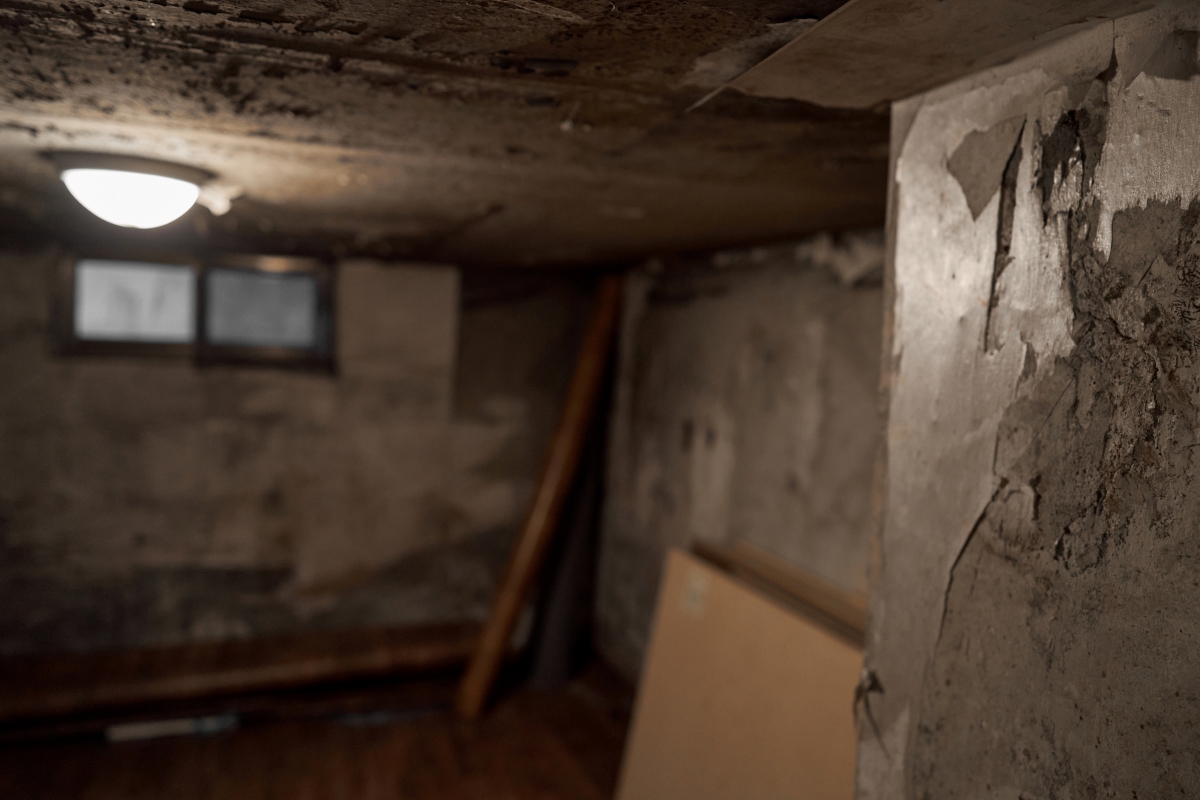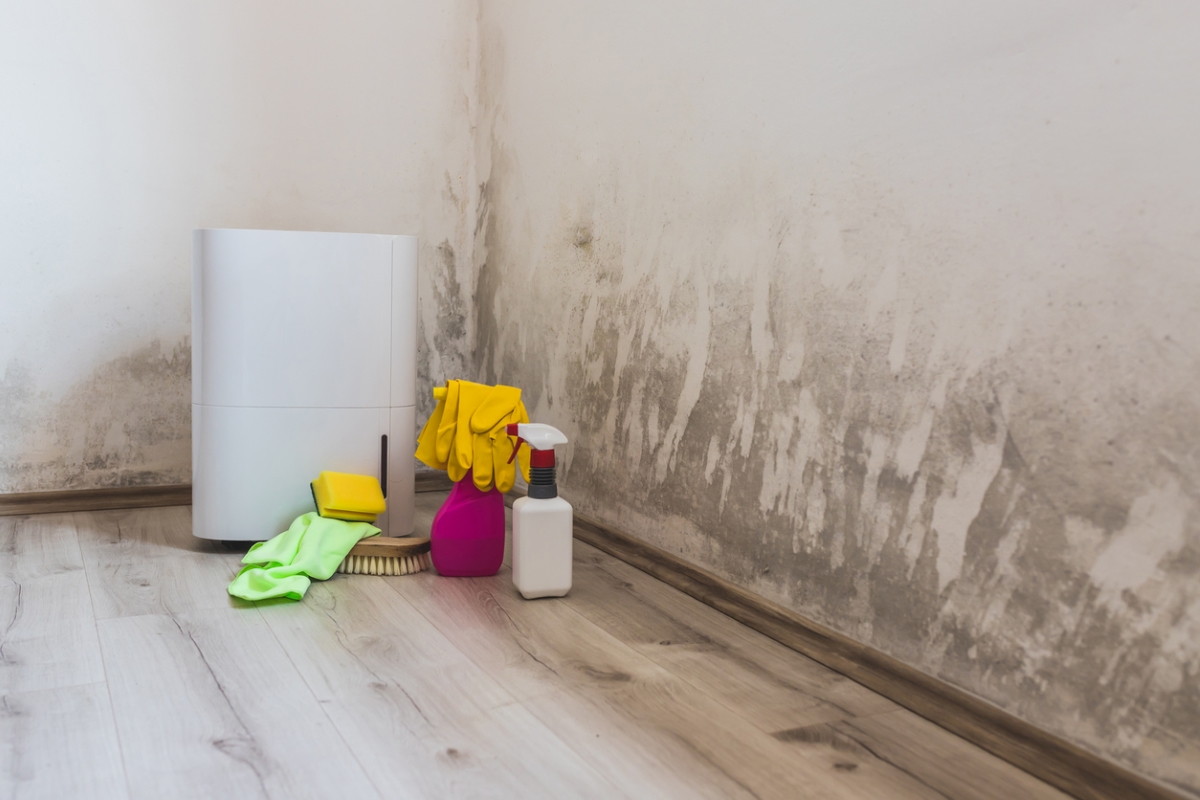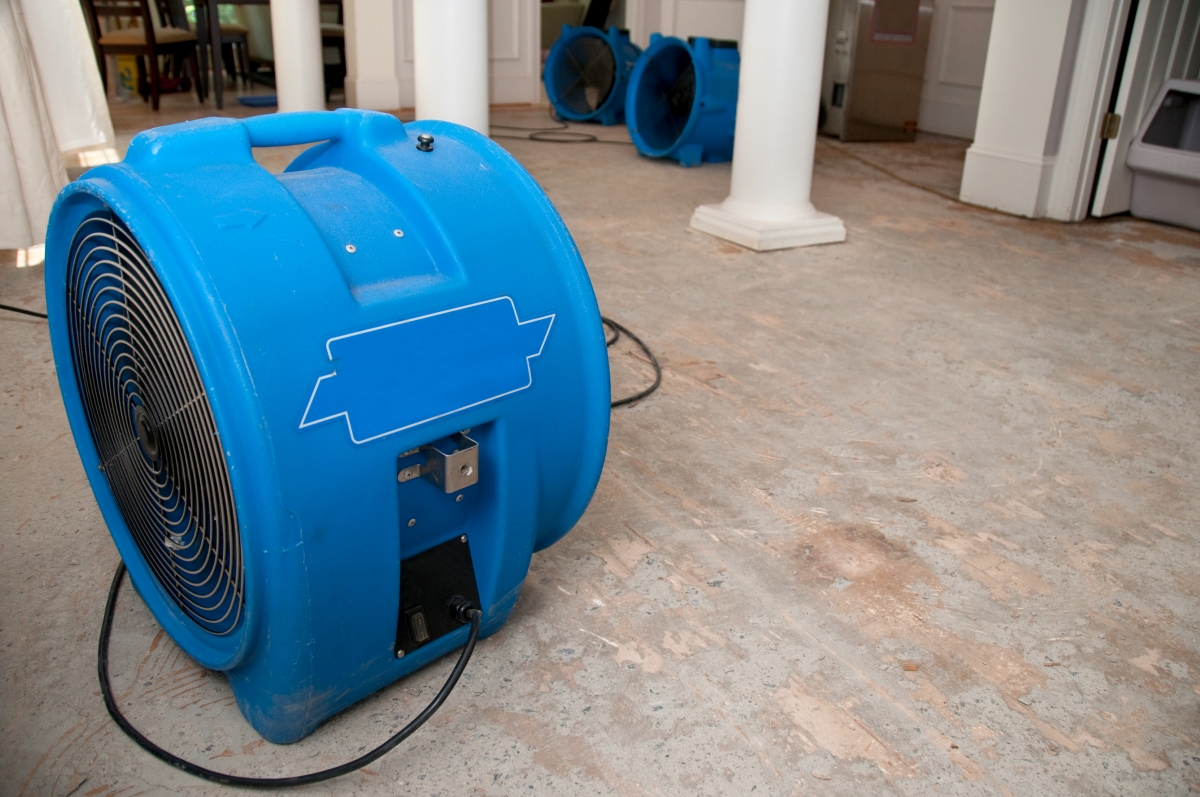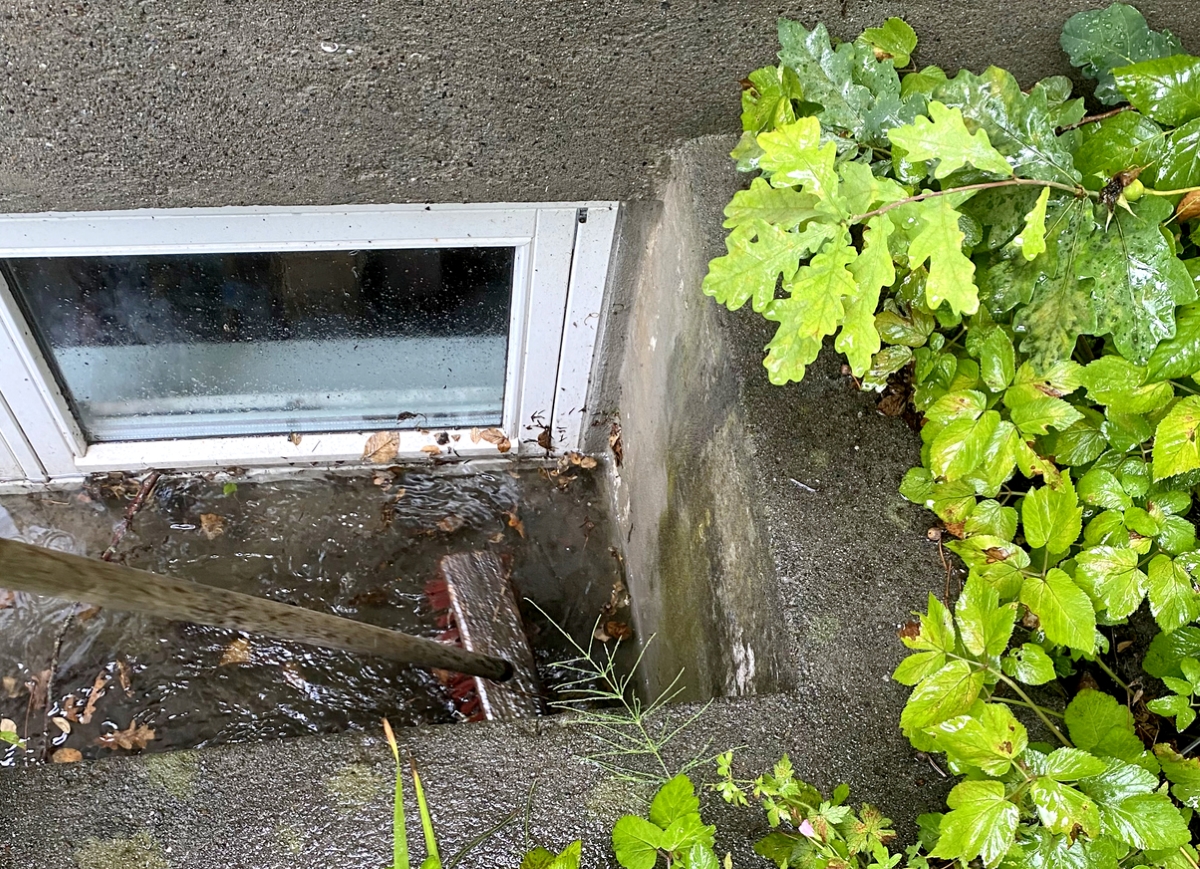

We may earn revenue from the products available on this page and participate in affiliate programs. Learn More ›
Q: My basement is dry but still smells musty. What’s causing the odor and how do I get rid of it?
A: Does the basement kind of smell like a wet dog? Yep, we know what you mean. Let’s dig into possible reasons for the funk, and how to get rid of a musty smell in the basement.
Causes of Musty Smells
This distinctive smell is the calling card of mold or mildew. The spores of these ubiquitous fungi drift through the air until they find a damp, dark, and warm environment—conditions commonly found in basements—that allows them to multiply and thrive. “Basements are naturally cool, and warm,” says Josh Mitchell, a plumbing technician and founder of PlumbingLab, an online source for plumbing information. “Humid air can condense on cold walls, creating a breeding ground for mold and mildew, common sources of musty odor.”
Although most mold species found inside homes aren’t harmful to humans, some people are allergic to the spores. They can develop symptoms that include a stuffy or runny nose, headache, fatigue, coughing or wheezing, and itchy or runny eyes after spending time in a mildewed or moldy room. Stachybotrys chartarum, commonly called black mold, is linked to more serious symptoms, including chest tightness and difficulty breathing, a burning sensation in the nose and throat, dizziness, headache, and trouble concentrating. Luckily, black mold isn’t nearly as common as less-toxic types.
Mold fungi feed on organic materials, which include wood, many types of fabric, paper, and even some glues. Given enough time, mold can heavily stain walls, floors, and ceilings; decay wood studs and drywall; damage carpets; and eat away at wallpaper. Mold that’s reached this level requires the services of a professional trained in mold remediation, but you can easily deal with a simple case of funky mildew smell and mild mold staining yourself.
How to Fix a Musty Smell

While you might be tempted to mask the odor with candles or room sprays, these measures aren’t long-term fixes. Simply banishing the odor won’t solve the underlying problem that’s causing the musty smell. To really conquer the stink, you must tackle the problem at the root. Try following these steps.
Clean up all mold or mildew spores present.
After inspecting the basement for signs of mold and mildew, make a plan to clean away the odor-producing mold and mildew. Here is an effective strategy:
- Get rid of any moldy or soggy cardboard boxes or other papers you’ve been storing in the basement. Mold thrives on paper products. Pack away salvageable holiday decorations and other items in large plastic containers with securely fitted lids.
- In order to remove mold and mildew spores, wash and dry any garments on the hottest settings that are safe for the fabric.
- Trash seriously stinky upholstered furniture, but try to save any lightly affected pieces with spot treatment. First, vacuum the item (discarding the filter and bag when you’re done), then wipe it down thoroughly with a clean sponge dipped in a mixture of equal parts water and rubbing alcohol. Let it air dry completely outdoors in a sunny spot for several hours—UV rays kill mold spores.
- Next, tackle any spots of mold on the walls, ceiling, or floors with bleach. Mix four parts of water to one part of household bleach and take a stiff cleaning brush to the surface. Once the mold spots are gone, wipe the surfaces with clean water with a clean sponge and then let air-dry.
Dry out the area.

Drying the basement is essential for long-term success.. “This step is important for preventing further mold growth and eliminating musty odors,” says Mitchell. He suggests a two-pronged approach:
- Increase ventilation: If possible, open windows “to allow fresh air circulation and moisture to escape,” Mitchell suggests. “Run fans, strategically placed to maximize airflow throughout the basement.”
- Dehumidify: A dehumidifier can helps dry out a basement space, Mitchell says. While many homeowners wonder if a dehumidifier will get rid of a musty smell in the basement, the answer is no, not on its own. It’s a tool that’s used to dry out a damp basement, and it comes in handy later, as we will get to in a minute.
Neutralize the musty smell in the basement.
To remove any lingering musty smell, try the old-fashioned and effective remedy of setting out a few small bowls of baking soda around the room; baking soda absorbs and neutralizes odor molecules well. Activated charcoal is another excellent odor absorber, according to Mitchell.
“Place bowls of activated charcoal around the basement to help remove the musty smell,” he suggests. White vinegar is yet another odor-neutralizing option. For more resistant smells, it’s hard to beat the moisture-and-odor-absorbing qualities of DampRid, which contains salt crystals.
How to Prevent Musty Smells in the Basement
You must eliminate or mitigate the sources of moisture in order to prevent a recurrence of the mold or mildew that caused the musty odor.
“Regularly inspect your basement for any signs of moisture and address them promptly,” Mitchell advises. This will, of course, prevent the musty smell from developing again.
Look for leaks.

First, poke around for any leaks in the basement that might lead to mold and mildew growth. Two common and easily handled problems are condensation dripping off an uninsulated pipe or water leaking through a basement window.
- Condensation from pipes: Many basements have exposed pipes running along the ceiling or down the walls. If you spot water “sweating” off these pipes, insulate them with foam pipe wrap, available for less than $15. The lengths of rubbery foam are pre-cut so you can easily slip them right over pipes. However, if the pipe is actively leaking, not just sweating, call a plumber without delay to repair it.
- Leaking windows: If your basement has windows, look for water running down the glass or puddling underneath windows when it rains. If you spot water, remove leaves and other debris that could be clogging the outside window wells. Fill the wells with gravel to help reduce the chance of clogs. Replace old weather stripping and caulk, as well, to seal any small leaks around the window frames.
Mitigate water seeping through the foundation, basement walls, and even soil.
- Cracks in the foundation: If you see water coming through a crack in the basement wall or seeping up from the foundation, the problem is a serious one outside the scope of the typical homeowner’s DIY abilities. Contact a contractor who specializes in basement repairs and basement waterproofing. Alternatively, one of the best basement waterproofing companies (such as Basement Systems or B-Dry) can help.
- Moisture seeping through walls: Moisture can also seep through walls, says MItchell, who adds that painting your basement walls can help lock in old odors and prevent moisture from seeping through. “Use waterproof masonry paint for concrete walls,” he suggests, “and ensure the walls are completely dry before painting, as trapping moisture behind paint can exacerbate mold problems.”
- Moisture from soil: Moisture from the soil can also come up through the foundation and seep into the room through the basement floor, increasing indoor humidity further. This moisture source is best addressed by a dehumidifier and may require a basement waterproofer.
Wipe out water vapor.
Due to its underground location, your basement tends to stay cooler than the upper levels of your home during the warmer months. That can be a problem, though, when warmer air from upstairs circulates into the basement. As the warmer air rapidly cools in the basement’s lower temperature, water vapor condenses into a film of moisture that settles on the basement walls, as well as any furnishings or other items stored in the space. Keep these items wiped down as frequently as possible, and again, use a basement dehumidifier.
After fixing obvious leaks, use a dehumidifier to lower the humidity level to under 60 percent. Test your basement’s level with a hygrometer, which shows the relative humidity of a room at a glance. The preferred level of indoor humidity for most people is between 30 and 50 percent, while mold thrives with humidity of 60 percent or higher.
Among the several types of dehumidifiers available, a compressor dehumidifier is best suited to basements. These devices reduce air humidity by sucking the room air over chilled coils, causing the moisture to condense into a storage tank.
